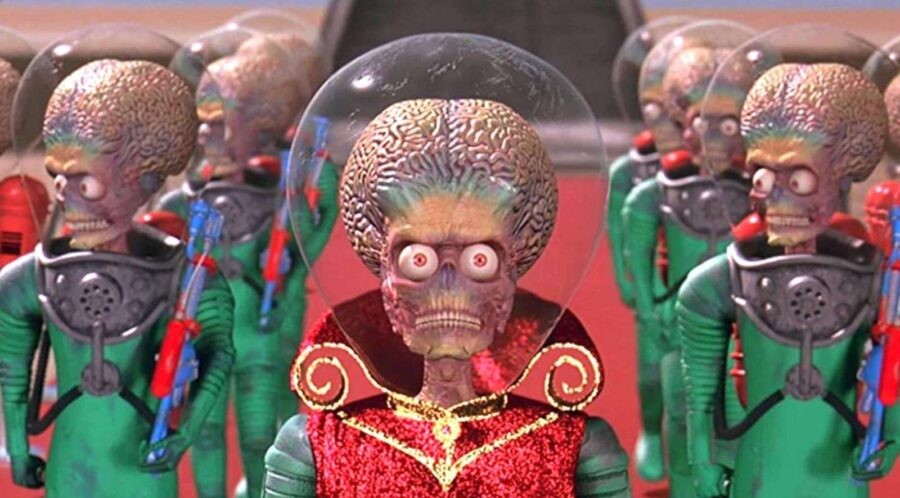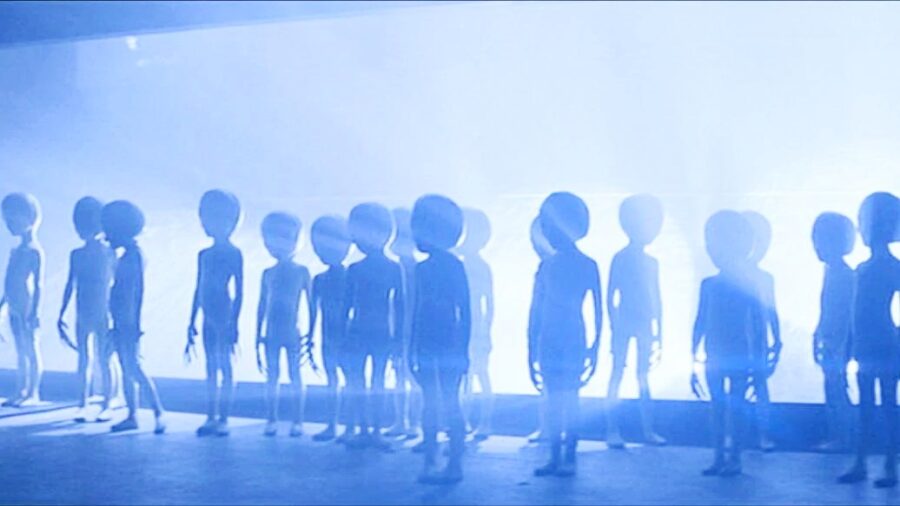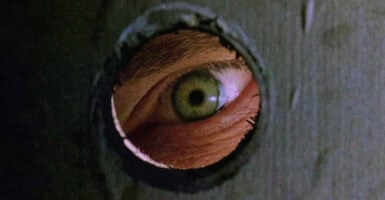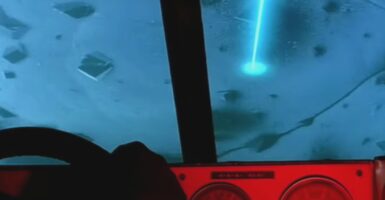Aliens Could Be Hiding On Planets With Eternal Night
A new theory of where aliens might be hiding could bring us closer to discovering life outside of Earth.

Just because we haven’t seen them yet, doesn’t mean that aliens don’t exist. In fact, most scientists wholeheartedly believe that aliens exist somewhere out in space, even if we haven’t found their hiding place yet. Now, a new study suggests that aliens might actually be hiding and keeping in the shadows of planets that have eternal night, otherwise known as “terminator zones.”
Astrobiologists usually hone in on planets that have large bodies of water, otherwise called “ocean worlds,” when looking for life beyond Earth because (at least as far as we know) water is essential to living. But so far, our scientists have come up with zilch when it comes to proving aliens exist. Now, a new study, which was published in The Astrophysical Journal, suggests that we may have been looking in the wrong place all along, explaining that aliens might actually be hiding on tidally locked planets that are covered in shadow.
A tidally locked planet is a planet that doesn’t rotate the way that Earth and the other planets in our Solar System do. Instead, like our Moon, one side of the planet is always facing the Sun, while the other side is trapped in perpetual darkness. Previously, scientists didn’t believe that these planets could support life, but now, they are rethinking that notion, hypothesizing that these tidally locked places could be exactly where aliens have been hiding all along.
The reason scientists haven’t entertained the thought of aliens hiding out on these tidally locked planets before is that they seemed completely inhabitable. The light side of the planet that always faced the sun would be way too hot, while the dark side would create unbearable freezing temperatures. However, the study suggests that the aliens aren’t on either the light or dark side, but rather hiding out in the middle area between the two extremes, aka in the terminator zone.

Another reason scientists didn’t previously think about aliens hiding out in these terminator zones before was that these planets typically aren’t ocean planets since the day side is normally covered in desert and the night side is often full of ice and glaciers. However, new evidence suggests that the area in the middle might have smaller bodies of water, like lakes, which would be able to support life.
Although none of the planets in our Solar System are tidally locked to the Sun, this type of planet is actually very common. In fact, planets orbiting M dwarf stars are often tidally locked, and these stars make up almost 70 percent of the stars in our galaxy. Since we’ve excluded these types of planets from our search in the past, including these planets now opens up a multitude of places where we might be able to find aliens hiding out.
Additionally, scientists are developing brand new telescope technology that is specifically meant to help discover aliens hiding somewhere in our Solar System. The Habitable Worlds Observatory is a telescope that will be launched in the next 20 years with the ability to search these dark zones on planets and perhaps bring us closer to finally discovering existing life beyond Earth.












